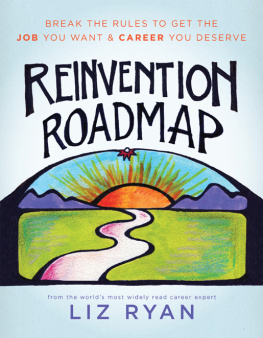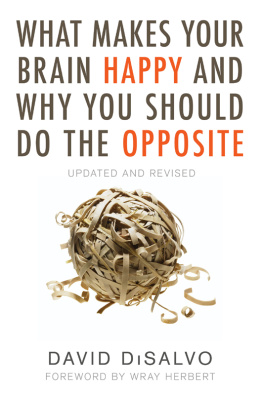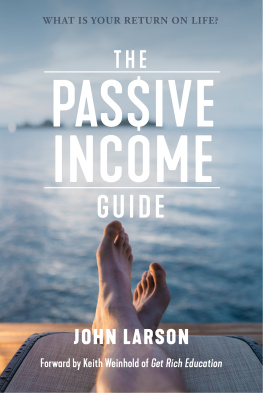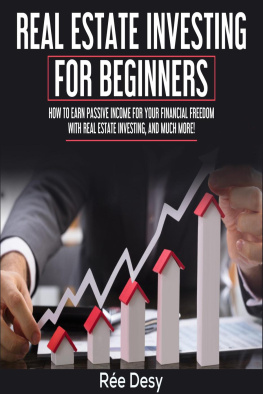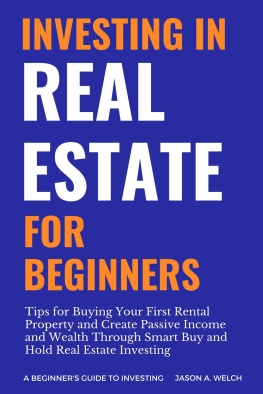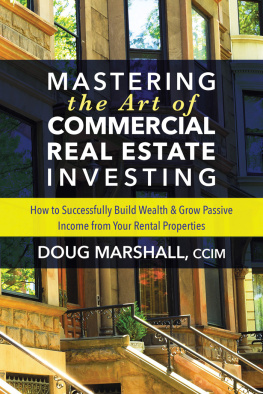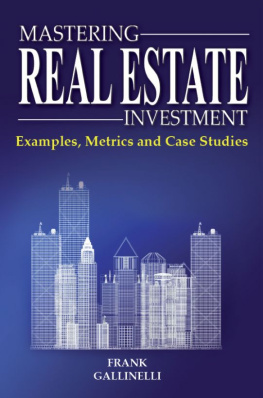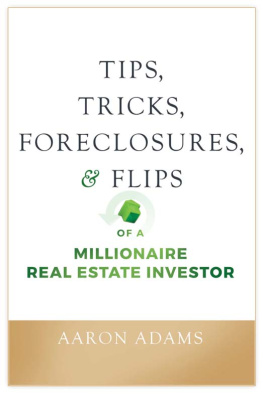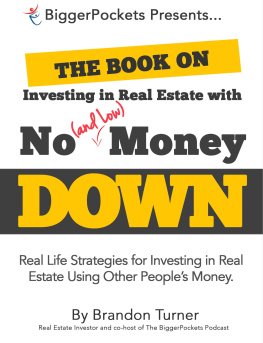Copyright 2016 by McGraw-Hill Education. All rights reserved. Except as permitted under the United States Copyright Act of 1976, no part of this publication may be reproduced or distributed in any form or by any means, or stored in a data base or retrieval system, without the prior written permission of the publisher.
ISBN: 978-1-25-958619-4
MHID: 1-25-958619-7
The material in this eBook also appears in the print version of this title: ISBN: 978-1-25-958618-7, MHID: 1-25-958618-9.
eBook conversion by codeMantra
Version 1.0
All trademarks are trademarks of their respective owners. Rather than put a trademark symbol after every occurrence of a trademarked name, we use names in an editorial fashion only, and to the benefit of the trademark owner, with no intention of infringement of the trademark. Where such designations appear in this book, they have been printed with initial caps.
McGraw-Hill Education eBooks are available at special quantity discounts to use as premiums and sales promotions or for use in corporate training programs. To contact a representative, please visit the Contact Us page at www.mhprofessional.com.
This publication is designed to provide accurate and authoritative information in regard to the subject matter covered. It is sold with the understanding that neither the author nor the publisher is engaged in rendering legal, accounting, securities trading, or other professional services. If legal advice or other expert assistance is required, the services of a competent professional person should be sought.
From a Declaration of Principles Jointly Adopted
by a Committee of the American Bar Association
and a Committee of Publishers and Associations
TERMS OF USE
This is a copyrighted work and McGraw-Hill Education and its licensors reserve all rights in and to the work. Use of this work is subject to these terms. Except as permitted under the Copyright Act of 1976 and the right to store and retrieve one copy of the work, you may not decompile, disassemble, reverse engineer, reproduce, modify, create derivative works based upon, transmit, distribute, disseminate, sell, publish or sublicense the work or any part of it without McGraw-Hill Educations prior consent. You may use the work for your own noncommercial and personal use; any other use of the work is strictly prohibited. Your right to use the work may be terminated if you fail to comply with these terms.
THE WORK IS PROVIDED AS IS. McGRAW-HILL EDUCATION AND ITS LICENSORS MAKE NO GUARANTEES OR WARRANTIES AS TO THE ACCURACY, ADEQUACY OR COMPLETENESS OF OR RESULTS TO BE OBTAINED FROM USING THE WORK, INCLUDING ANY INFORMATION THAT CAN BE ACCESSED THROUGH THE WORK VIA HYPERLINK OR OTHERWISE, AND EXPRESSLY DISCLAIM ANY WARRANTY, EXPRESS OR IMPLIED, INCLUDING BUT NOT LIMITED TO IMPLIED WARRANTIES OF MERCHANTABILITY OR FITNESS FOR A PARTICULAR PURPOSE. McGraw-Hill Education and its licensors do not warrant or guarantee that the functions contained in the work will meet your requirements or that its operation will be uninterrupted or error free. Neither McGraw-Hill Education nor its licensors shall be liable to you or anyone else for any inaccuracy, error or omission, regardless of cause, in the work or for any damages resulting therefrom. McGraw-Hill Education has no responsibility for the content of any information accessed through the work. Under no circumstances shall McGraw-Hill Education and/or its licensors be liable for any indirect, incidental, special, punitive, consequential or similar damages that result from the use of or inability to use the work, even if any of them has been advised of the possibility of such damages. This limitation of liability shall apply to any claim or cause whatsoever whether such claim or cause arises in contract, tort or otherwise.
For Jean, whose patience made this book possible.
Preface
Before you make your next investmentthat is, before you decide whether to use that $20 bill in your wallet to buy this book or to order a pizzait would be a good idea to ask yourself if youre at all serious about wanting to make money investing in real estate.
You can make a lot of money investing in income-producing property. You can also make a little money when, with some better preparation, you could have made a lot. You can even lose money in real estate when, in fact, you could have made, both literally and figuratively, a great deal.
Well-worn clichs assure you, Hey, real estates a no-brainer. After all, theyre not making any more of it. You cant go wrong, right? Wrong.
In real estate, as in life, there is a right way and a wrong way to do most things. If you want to succeed, if you want to make money, then learn to do it the right way. If youd rather depend on luck, buy this book anyway; Ill put a map to a casino in the Appendix.
Real estate investing is a numbers game, and the purpose of this book is to show you how to do the numbers. This task is not difficult, but it is absolutely essential to your success. This book is not about how to make millions while starting off with no money, no credit, and no time. Instead, youll learn here about cash flow, rates of return, property value, financing guidelines, and a few dozen other key measures. With a bit of practice, youll be able to read a propertys vital signs and judge its health as an investment.
I have been involved with income-property investments for more than 40 years. In the early 1980s, I founded a software company, RealData, to produce programs that could help investors and developers evaluate prospective real estate deals. During these four decades, I have talked to a great number of investors and would-be investors, and, amazingly, Ive encountered some who have been completely unburdened by any knowledge whatsoever of how an income-property investment really works. A handful of those people appear somehow to have survived with their net worth intact. Most, however, have turned into material for case studies on how to lose a lot of money.
When you learn how to crunch the numbersa task that youll discover is easier than you imaginedyour chances of success will be vastly improved, and youll have a substantial degree of control over the results of your investments. Try that with the stock market. If you own property already, youll understand it better, and that understanding can translate into real dollars. I once received a reassessment notice for a commercial building I own. Like everyone who receives a new tax bill, I thought it was too high. I prepared a concise, one-page presentation of the propertys net operating income and capitalization ratetopics covered in this bookand showed them to the assessor. He looked at my figures and replied, Someone obviously plugged the wrong cap rate into the formula when they assessed this property. Well correct it. I didnt need to make any emotional appeal for justice, and I didnt get an argument. The numbers told the whole story. Knowing how the numbers work has saved me thousands of dollars per year in taxes on this one property.
Let me say a bit about how this book is organized. The Introduction will lay out the four ways that you make money with real estate. Youll see these four elements manifest themselves throughout the rest of the text. in its entirety, but if you use it strictly as a reference, then take note of cross-reference topics that youll find helpful.
Downloadable Forms and Excel Templates in This Book
Youll find in both a number of useful forms, as well as spreadsheet templates that you can download from my companys website.
These will simplify many of the calculations in this book. Theyre not fancy, but they get the job done if you need to make a mortgage calculation, figure a propertys appreciation, or fill out an Annual Property Operating Data form.



